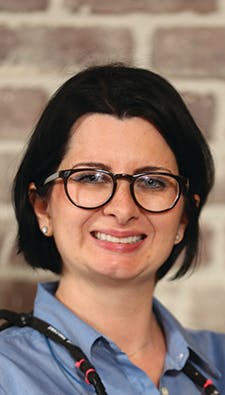The surprising significance of the morning huddle: How a daily meeting could transform your dental practice
Countless articles have been written about “the morning huddle.” The morning huddle refers to a daily team meeting (doctors, hygienists, assistants, the benefits team, and front desk staff) that takes place a short time before the first appointment to discuss the schedule and some key performance indicators. Sometimes the last couple of days are reviewed; sometimes team members discuss the next day, week, or month. Up until now, one of the suggested main purposes of the huddle has been to survey and compare numbers. Within the scope of this article, I hope to bring attention to some equally important objectives.
The morning huddle has only become a staple in my office over the last several years, although we’ve been in practice for over 14. Prior to my mobilization of this team gathering, I’d heard about the morning huddle and was aware that it was a recommended practice, but I never had enough interest to put it into action. I didn’t understand its importance.
Most experts in the field rely on a “huddle sheet” to keep the meeting on track. It includes pertinent KPIs (key performance indicators) varying by practice and consultant such as provider production for the current day, past days, and possibly compared to the previous month or year; treatment plan presentation; treatment plan scheduled; and maybe even projected monthly production.
Dr. Robert Pick of the Pick Group is an incredibly resourceful expert in this field, and he has been instrumental in the design of the huddle we use. Our office huddle sheet is not proprietary, but it has been customized to fit our needs. It is no more important, not drastically different, and certainly not superior to any other sheets I’ve found. What I have discovered, however, is that as initiated by the huddle sheet, it’s the team’s participation in the meeting that has been a game changer for us. I have recently realized that our team huddle—having nothing to do with the schedule or the numbers—has been essential to solidifying our amazing team dynamic.
Set the tone
Notwithstanding the importance of reviewing numbers, the morning huddle is an opportunity to showcase leadership skills, not just for practice owners and doctors, but for the team.
Per Simon Sinek, leadership is not about being in charge; leadership is about taking care of those in your charge: this includes dentists, owners, office managers, and supervisors.1 A leader’s demeanor during the morning huddle will influence the entire day. An enthusiastic, energetic, and positive morning meeting will ensure a day filled with enthusiastic, energetic, positive communication among the rest of the team and patients. A solemn, burned-out, or indifferent presence by leaders will likely bring about a heavy and dreadful demeanor in the practice.
Bringing passion and a spirited dynamic to the team huddle creates the opportunity to extend that same kind of care toward patients. This is, most would agree, of utmost importance to running a successful practice.
The magic within
In a recent conversation with Facebook Dentisting Guru Paul Goodman, DMD, he commented that a day without a morning huddle has the potential to lead to missed financial opportunity. More importantly, he wholeheartedly believes the huddle to be the most magical time of day.
It is the time to remember the people behind their specific daytime roles; a time to pay homage to interoffice relationships. These same relationships exist, day after day, as patients rotate through the schedule. It’s a time to pay attention to the culture of the office that drives the practice and ultimately defines the core mission and values. The office huddle is a moment of significant importance before all staff switch to autopilot. It’s time for face-to-face communication, which strengthens camaraderie and dependence on one another.
The prescription
Examining the schedule allows for all team members to plan out what they’ll be doing throughout the day. It assigns everyone a function and allows them to fulfill their job descriptions. Reviewing this day in and day out deepens each team member’s sense of identity and purpose within the practice. Auditing the schedule calls attention to the areas in which team members may need to help one another and prompts planning around how that help can be utilized. The morning huddle creates a form of dependency among team members and sets a precedence for them to count on one another. Most importantly, it invigorates them to propel the mission of the office forward.
A safe space
The more time team members spend together, the greater the opportunity for leaders to emerge and for chemistry to develop and solidify. One of the most important things a leader can facilitate is the creation of a safe space for all staff. A safe space is an environment where staff honestly believe they can be themselves, speak from their own experiences, and offer their perspectives. The huddle is an ideal opportunity to establish such an environment. The morning huddle is also an opportunity for practice leadership to truly listen. This idea of creating a safe space serves to strengthen affirmations, extend acceptance, and provide a nurturing workplace. It also propels a team into finding new solutions, which further encourages growth. It’s an opportunity to discuss the team’s personal wins, making them thirsty for more.
Another important building block that leaders bring to the huddle is the framework of trust. Trust doesn’t always result from monumental achievements. Outstanding performance certainly helps to carry it forward, but many times trust is established through small steps, which, through the morning huddle, can be accomplished every day. This trust and openness creates an atmosphere in which team members can be vulnerable without penalty. The morning huddle truly makes a team come together and creates an environment that sets up everyone for success. It fosters a team climate characterized by interpersonal trust and mutual respect in which people can confidently bring the office mission and vision to life. The other aspect of the huddle is that, as part of the daily routine, it is essential to helping staff feel comfortable sharing their concerns, and learning and becoming inspired as a result.
When we all go home at the end of the day, feeling both exhausted and fulfilled by what we have accomplished together as a team, we know that the morning huddle was the catalyst, and it will be there again tomorrow. Day in and day out, it is people that matter the most.
Reference
1. Sinek S. Start with why: How great leaders inspire everyone to take action. Penguin Group; 2009.
About the Author
Maggie Augustyn, DDS, FAAIP, FICOI
Maggie Augustyn, DDS, FAAIP, FICOI, is a practicing general dentist, owner of Happy Tooth, author, and inspirational keynote. Recognized as one of the top 250 leaders in dentistry, she captivates audiences with her ability to evoke emotion by giving attention to the things that we suppress in the hopes of making us feel less alone and more connected. Dr. Augustyn is the national spokesperson for the Academy of General Dentistry and a faculty member for Productive Dentist Academy. Visit her website for more information.


